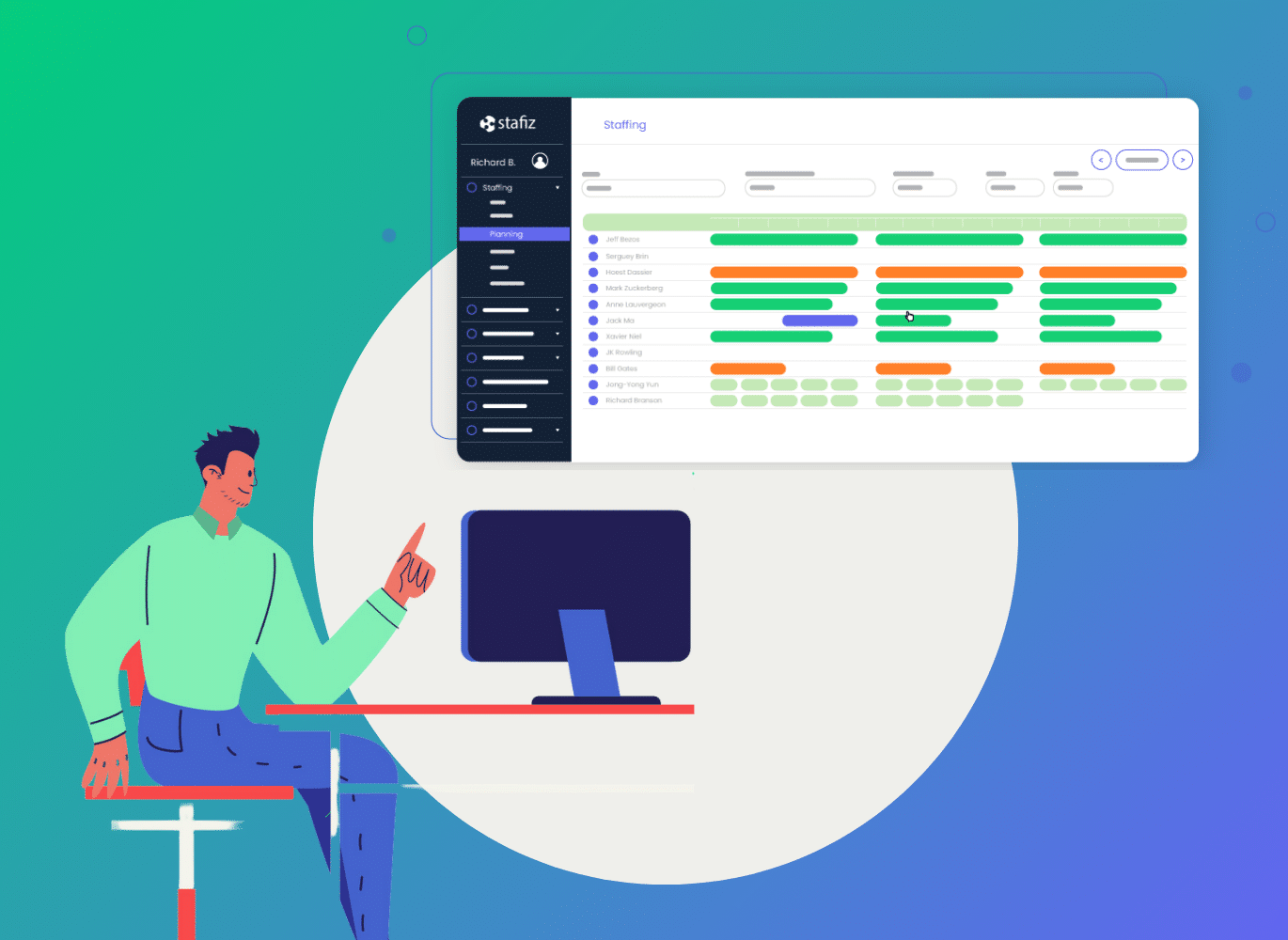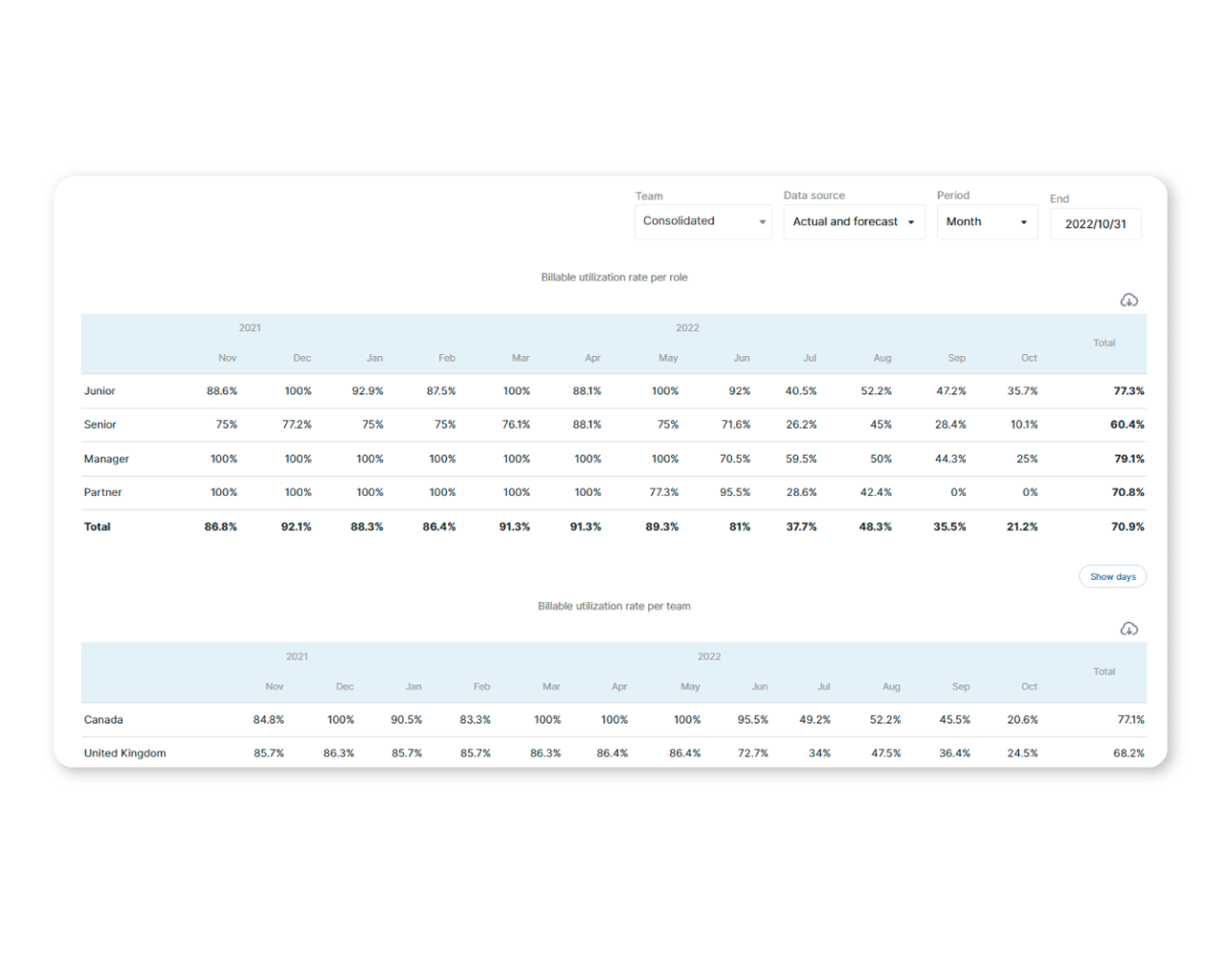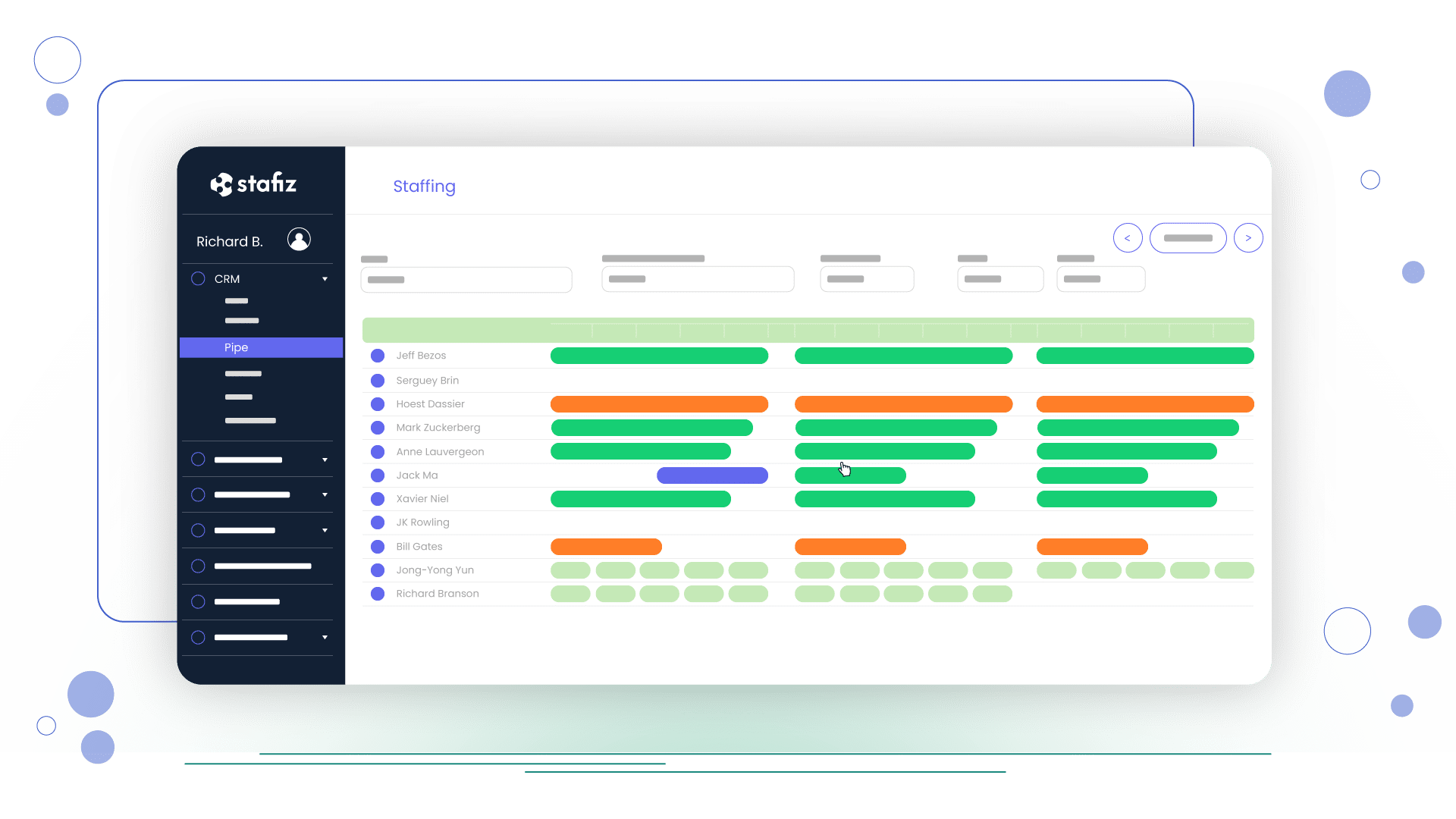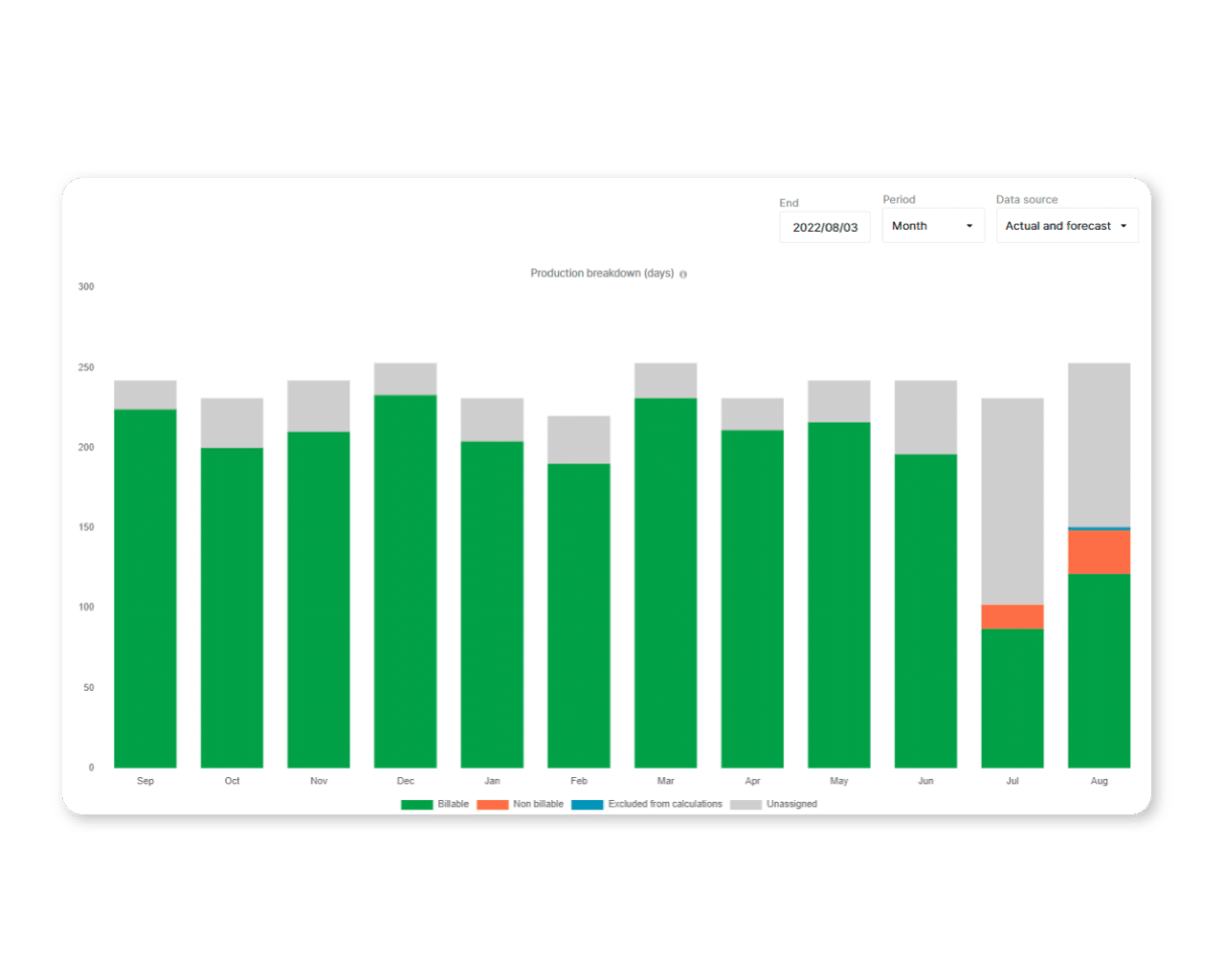How to Build a Workload Plan?

Establishing and monitoring your teams' workload plan is essential to meet the deadlines of a project without neglecting its quality.
A well-executed workload plan brings many advantages:
- the profitability of the business is increasing;
- turnover is growing and cash flow is improving;
- employee satisfaction increases, as does employee retention.
This is why the most advanced companies in project management such as McKinsey, Cap Gemini or Accenture invest in teams dedicated to supervising workload plans.
Is your company smaller, or maybe younger? Don't worry!
It is not necessary tohire a resource planning manager for the implementation or monitoring of your load schedule. It is possible to calculate it by following these 4 steps, including it in your project management from the start.
Ready to Improve your utilization rate drastically?
What is Workload Planning?
In order to build a realistic and effective workload schedule , it is important to understand how it works and what is at stake.
Workload Planning Meaning
A workload plan or schedule refers to a tool that facilitates the management of resources, both human and material, with the aim of creating cohesion between the load necessary to produce a project (or a task) and the capacity of the resources assigned to them.
It can take the form of an Excel spreadsheet, or be done by software.
Visually, it allows a project to be carried out in several phases and periods of time and details the time spent by a person (or even a team) on a task, or on the project as a whole.
In a dedicated tool, employees can be directly assigned to the tasks on which they are assigned.
Why Is Workload Planning Important?
The main benefit of the workload plan is to be able to plan the organization and progress of the project even before it starts.
By taking into account the issues related to employees (availability of resources, employee skills) and material and financial resources, it is easier to anticipate:
- any time constraints,
- resource requirements,
- financial risks.
This plan provides visibility into the future activity of employees, making it possible to balance the periods or teams that could be overloaded. Conversely, identifying periods of slack makes it possible to avoid underloading in order to optimally mobilize the production of the teams.
Step 1: Set Billable Utilization Goals
To establish a workload schedule, employees are assigned to tasks according to their roles, seniority or skills. In order for the plan to be respected, it is therefore imperative to take into account everyone's availability.
Utilization rate will help you define your billable workload objectives with reliable data.
Billable Utilization Rate as a Reference for Workload Planning
The Billable Utilization Rate is a key indicator of a company's performance.
It is used to determine the proportion of time spent on projects that are billable to customers – and therefore revenue generators – compared to the time available to employees.
It indicates the percentage of time spent on sales-generating projects in relation to the time actually available of employees, i.e. excluding absences during which there is obviously no capacity (vacations, RTT, sick leave, etc.).
The billable utilization rate is calculated with this formula:

billable utilization rate = Time spent on billable projects % Available time excluding holidays
In project management jargon, the acronym billable utilization rate may have other common names, such as utilization rate as previously seen, or the billable rate. However, it is not necessary to not to confuse the billable utilization rate with occupancy rates, nor the completion rate.
Occupancy rates integrate the entire load, whether it generates turnover or not. Thus, an employee may have an occupation rate of 100%, but a utilization rate 50% if they spend 50% of their available time on an internal project, such as preparing a team-building event for example.
Take completion rate as a valuation of the time spent and to be spent on the project, in relation to the amount sold. When the value of production is higher than the amount invoiced, the project is not profitable, and probably reflects poor resource management.
What is a Good Utilization Rate Goal?
For a company whose business is the sale of projects and services, it is crucial to track these utilization rate to ensure that the workload of employees is optimized and that the activity is profitable.
A service company must ensure that its productive workforce has the right level of allocation on projects that generate revenue. It is therefore necessary to determine the objectives of the billable utilization rate to be achieved. These vary according to the role of the employees.
Generally, the objectives of billable utilization rate of employees are decreasing: the most junior employees have objectives of billable utilization rate very high, above 80%, while much more senior employees, who spend more time on commercial and managerial issues, will have lower objectives, in the order of 20% to 30%.
This objective is very much linked to profitability. The cost of an employee is fixed. In order for him to generate a profit for the company, he must work x days per month, based on his average selling price. It is this analysis that must be made in order to set the right level of billable utilization rate, and balance employee activity with a focus on satisfaction and retention.
Therefore, consider defining specific objectives for each employee's role or level to provide a more relevant analysis.
The next step is to create monitoring systems to be able to compare actual and forecasted workload against the target workload.
Create the monitoring to be able to compare the actual and the forecasted load against the target.
Step 2: Create the employee database
To set up a workload plan, a resource capacity must be established. The latter brings together all the employees who work on the projects, so as not to omit part of the capacity and to avoid biasing the analysis. It is therefore necessary to list all the collaborators, and assign them to a team if you want to do performance analysis by team later, although this is optional.
On the other hand, it is not necessary to include the support teams in the analysis, since they do not work on billable projects. Their workload plan will therefore have no impact on the billable utilization rate.
Next, you will need to determine the capacity of each employee. How many hours are available per day per person? The duration can vary depending on the type of contract of your employees: some are working 35 hours, others 40 hours, others may be part-time... It is important that the capacity calculation is aligned with reality to provide relevant results.
Take Leaves Into Account
As the name suggests, the billable utilization rate must recognize the impact of leave in the calculation. As such, your workload plan must therefore include all of your employees' leave. Dates of leave are important because the analysis of the billable utilization rate is generally to be done over defined periods (weekly, monthly, quarterly, etc.).
Ideally, the leave in the workload plan is updated automatically so that the calculation of the forecast capacities is up to date. Dedicated software like Stafiz allows you to automate leave management or connect to your leave tool to retrieve this data.
Part-Time Contracts and Sick Leaves
It is necessary to take into account the fact that some employees may be on part-time contracts, but also possible work stoppages or maternity/paternity leave, for example. By integrating this data, the calculation of the workload plan is certainly reliable. A check with HR to set up your calculation is therefore necessary at the start.
In addition, you must ensure that any new work stoppages, part-time contracts or any schedule adjustments are subsequently communicated to you in time to continue to maintain the workload plan correctly.
Ajudsting Internal Projects' Capacity
In order to calculate utilization rate accurately, we also need to take into account time spent on internal projects. An employee's activity alternates between work on projects for customers - which generates sales - and work on projects for suppliers. which generates salesbut also internal projects and other non-billable activities.
Among these internal jobs that reduce the ability to work on customer projects are management, training, but also internal project management. However, they obviously remain essential activities, and must be integrated into the workload plan to make the data reliable.
For example, you can determine the number of hours or the percentage of time spent on this type of activity according to the employee's position. The most senior employees will have more time for this type of activity.

👥 Is your team ready to shine? Be sure by following our guide on how to set up a resource planning.
Step 3: Resource Allocation
Once your resource capacity is adjusted as close to reality as possible (i.e., taking into account leavs, downtime, and internal projects), it's time to forecast the workoad associated with billable projects.
Good project management involves creating a project workload plan – or production plan – from the start.
This project workload plan includes:
- The different collaborators (or role type) who work on the project.
- the time it takes for each of them to spend the project activities;
- the associated sales rate for each of these activities, by assigning a rate/hour or a rate/day on these different lines (optional).
Once the workload plan has been prepared, the budget must then be organised over time : if an activity requires 2.5 days of work, these 2.5 days must be placed over the right period to reduce the capacity of the employee(s) working on this activity.
This responsibility is usually assigned to the project manager. He or she must more precisely assign the workload to the various collaborators working on the project.
The entire project budget must be allocated to employees, and the workload must be positioned over time. If it is impossible to specifically determine which employee will be assigned to a particular activity, the workload must be assigned to the role or grade level, in order to allow a more global analysis, while providing room for manoeuvre.
Digitalize and simplify employee scheduling & workload management
See Stafiz in action in 2 minutes
Step 4: Calculate the utilization rate forecast
If you have completed the previous steps, you are now able to analyze your utilization rate forecasts and analyze how they differ from your objectives. In order to assess the workload plan and ensure that you are optimizing resources to the maximum, you can read the TACE from different angles.

Stafiz is a resource planning tool for administrative efficiency and utilization optimization.
Utilization Rate Forecast by role
The granularity of the analysis by role or by seniority makes it possible to assess the risks of underloading or overloading of work of a group of employees. If the burden is too great, this vision also makes it possible to anticipate training and even recruitment needs.
Forecasted Team Utilization Rate
Team leaders must also have Objectives of billable utilization rate set so that they can work on optimising the workload of their teams.
If the goals aren't met, they can work on starting projects faster or breaking down the load to achieve a better overall load distribution.
Individual Utilization Rate Forecast
It may also be useful to analyze the progress of an activity. This enables you to position the employee in relation to the rest of the team.
If the gap is too wide, it's crucial to ensure that each employee's assignment of each employee is in line with their level of skills and experience, as well as with the missions specific to their role and skills. By doing so, you ensure that your talents remain satisfied and avoid the risk of them leaving the company.

In conclusion, it is imperative to establish a workload plan in order to be able to Follow the utilization rate. The billable utilization rate is indeed a key indicator of a project's performance, since it ensures that the workload is well distributed, and that the activity allocated to a project is profitable.
First of all, you have to define the objectives to be achieved. They serve as a guideline and ensure good profitability for the activity.
It is then necessary to plan the load on external projects, internal projects, absences and part-time work so that occupancy is as reliable as possible.
Finally, it is necessary analyze the billable utilization rate and compare them against the goal to make decisions as early as possible: speed up the start of certain projects, hire or reduce payroll, or better distribute the load to increase efficiency and productivity.
As for the formatting of your workload plan, you can of course build it on a spreadsheet such as Excel or Google Sheet, depending on your preferences and your use. However, make no mistake: the spreadsheet won't necessarily save money, because reliable data requires synchronizing a lot of data, such as project planning and management, vacation dates, and resource capacities, each of which can come from different sources.
Given the major impact on profitability of good load management, it is in your best interest to choose dedicated software such as Stafiz in order to make all your information coincide to ensure a very favorable ROI.
Questions:
There are generally three types of expenses in the management of the resource planning : the actual load (time actually spent on tasks), the remaining load (time needed to complete the work in progress) and the projected load (estimated time for future projects). This classification makes it possible to better anticipate the availability and use of resources.
The projected workload plan is a tool that allows you to visualize, over a given period, the expected workload for each resource or team. It takes into account current and future projects in order to anticipate needs, avoid overloads and distribute work efficiently.
Workload represents the amount of work that needs to be done, expressed in hours or days, while capacity refers to the amount of work that a resource or team can absorb over a given period of time. The balance between the two is essential to optimize theresource planning and ensure the performance of projects.


